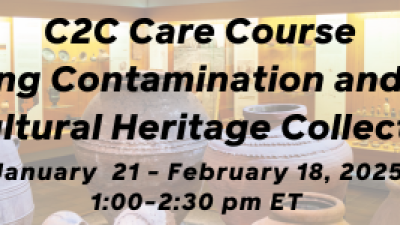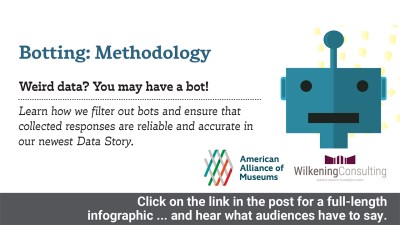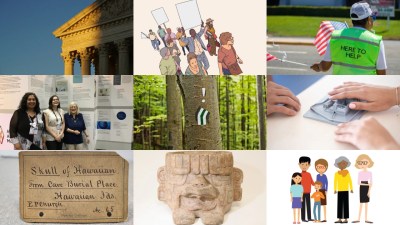
Compared to other areas of museum work, guest services (or visitor services, as it’s sometimes known) often gets overlooked for the impact it has on community-building. This may be because, rather than any one big initiative, the work of guest services staff is incremental, building relationships over time. The start of an enduring relationship can look as simple as greeting a member by their name when they come in or finding a moment of connection in a conversation with a guest.
As a guest services manager at a small art and history museum, I work with my team to ensure our interactions are not transactional in nature, but are used as an opportunity for connection. Did something in particular bring a guest in? Are they visiting for the first time? Taking the extra step of asking questions like these can accomplish a lot. This human-centered approach can forge deep relationships that reverberate in the larger community, making the museum a place people want to return to, knowing they will be welcomed and remembered.
But how do you make this shift from transactional to relational interactions? Here are some tips I’ve picked up along the way.
1. Practice Deep Listening
When engaging in conversation with guests, slow down and really listen to what they are saying. Ask intentional questions on both ends of the visitor journey—those that go beyond simple yes/no responses. Instead of “Are you here to visit?” for instance, ask “What brought you in?” And before launching into a rundown of exhibitions and events to see, try asking, “Is there a particular exhibit that you are here to see?”
Skip over related stories to continue reading articleThis way, instead of making guests feel they are one of a million people passing through, you show them they are being seen and heard. The act of listening is one of the most hospitable things one can do for another person. As well, deep listening can help guests orient themselves and shape the visitor journey by aligning their interests to enhance their experience. It can be a way to provide information, and for smaller organizations, it can become a starting point for relationship-building.
2. Use Gender-Inclusive Language
Instead of gendered language, like calling someone “sir” or a group of people “ladies,” greet guests with neutral terms, such as “hello there” or “welcome folks.” When trying to identify someone to another person, refer to them by what they are wearing, such as “that person in the blue sweater,” instead of their presumed gender. This helps avoid inadvertently misgendering guests, which can make them feel disrespected and unwelcome.
It is also important to mind your language around children visiting with adults. You should not assume that the adults are always their parents, so phrase questions like “Are you with an adult?”
3. Solicit Guest Feedback
Chances are that guests will have opinions on their visit, which you may be able to use to elevate the experience for future guests. Maybe there needs to be more lighting in a particular part of the gallery, or the text display is too small in one of the exhibits, for example. Making a habit of asking for these reactions, and creating a mechanism for sharing them with the relevant staff to consider, can be a helpful way to identify changes that would make your museum more human-centered. For example, at our institution one of the repeat questions recently has been when the hands-on component we took out during COVID is coming back, so in response we have added some low-stakes activities in our atrium and first-floor gallery.
Even if you can’t always act on the feedback you get, the act of asking can help the guest feel appreciated and may encourage them to dive deeper into the space through coming back for an event, volunteering, or becoming a member. Not everyone will feel comfortable to (or want to) share their experience, so it’s important to respect that and try to read guest’s wishes as they exit. Even if they do not seem to want to engage in formal conversation about their experience, a simple “thanks for visiting” can still be a powerful way of making them feel seen.
4. Strive for Welcoming Hospitality
In the customer service industry, welcoming hospitality is the formal term used to describe the warm glow you feel when you know you are being taken care of by someone willing to go above and beyond. This quality is not always associated with cultural institutions as much as other fields, but what if it were the norm? Think of the rave reviews that could come in. “Front-line staff was amazing, we enjoyed our visit, and look forward to returning.” While we typically look for positive feedback on exhibitions and programs, this quality of service can be just as important in creating a satisfying visit and encouraging repeat visits. Sometimes it is the simplest gestures that can have a positive impact on creating a welcoming environment for all guests.
Here are some immediate ways your guest services staff can start using welcoming hospitality principles:
- Greet every visitor who comes through the doors. (This can be as simple as a “hello.”)
- Start a language program for staff to be able to assist guests in their primary languages.
- Learn repeat-visiting member’s names, and welcome them by name when checking them in.
- Walk people to their destination when coming in for an event, especially those who haven’t been in before. (If this is not feasible at your museum, you can offer clear verbal instructions and/or keep a laminated map at the front desk showing the route.)
- Thank visitors on their way out. (This can be as simple as a “goodbye.”)
Conclusion
Guest services teams are often the eyes and ears of the cultural space where they work. They relay to other teams if something is unclear in an exhibit, or if something needs to be fixed before opening. In this sense, they have the ability to help design and develop spaces that are human-centered. They know which audiences visit, what brings them back, and what they would like to see more of.
This human-centered approach can also create a ripple effect throughout the organization, becoming a powerful model for other departments. Think about how some of the same principles might benefit team meetings and work with outside collaborators, for instance. As cultural institutions are hoping to attract new audiences, it is important not to underestimate the potential a simple welcome can have. It can make your museum a place people want to return to, because they feel they belong every time they walk through the doors.








This is a lot of emotion work for what are usually minimum wage, entry positions. What r people usually getting paid?
As someone who’ s currently working in Visitor Experience, this is something that my organization always strives for– inclusivity and a warm welcome feeling. It’s also helpful to remember that this may be a visitor’s first time setting foot into any sort of museum.